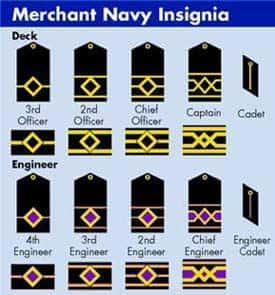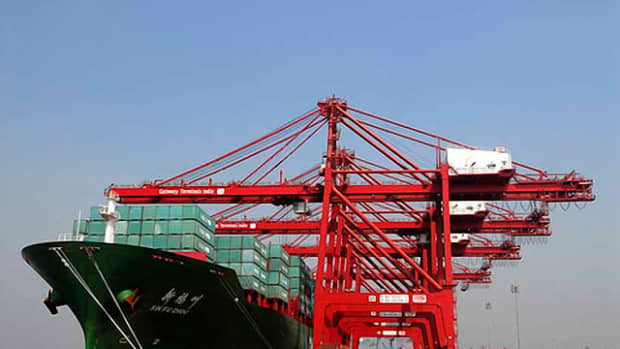I am a sailor that loves educating others about the seafaring life.
Famous sailors that come to mind include people like Christopher Columbus, Vasco da Gama, Ferdinand Magellan, Amerigo Vespucci, and Sir James Cook. Actually, all these people were Masters (also called Captain or Master Mariner) onboard sailing ships.
Sailing is teamwork, so it needs different ranks to carry out specific duties.
The "ranks" that make up the ship's team include:
- Master
- Chief Mate (also called Chief Officer)
- Second Mate (also called Second Officer)
- Third Mate (also called Third Officer)
- Deck Cadet
- Chief Engineer
- Second Engineer
- Third Engineer
- Fourth Engineer
- Engine Cadet
- Electrician
- Boatswain (also called Bosun /Deck Foreman)
- Pump Man
- Able-Bodied Seaman (AB) (also called Quartermaster),
- Ordinary Seaman(OS)
- Fitter
- Oiler
- Wiper (also called Motorman)
- Chief Cook and Steward
Even though the crew list includes the Master's name, a ship's team is often called Master and Crew, because the Master is considered the owner's representative, and not strictly part of the crew.
In olden days, when ships used sails, there were no Marine Engineers onboard; when power-driven vessels were introduced, these ranks were added. Nowadays, shipping involves modern electronic equipment and machinery; a ship with its cargo is almost like a moving factory. Two decades ago, ships had some other ranks, such as Radio Officer, Carpenter, Store Keeper, Second Cook, Second Steward, and Purser, but nowadays these ranks hardly exist.
A ship, to be seaworthy, must be sufficiently manned to enable its safe operation. The requirements for safe manning are contained in the STCW 95(VIII) regulations, and are stated by the Flag state as well. Let us see about these ranks and their responsibilities.
Master
The Master is the person holding the Deck Class I certificate of competency (COC) (Unlimited/Foreign going). He is the commanding person of the ship and the highest ranked Deck Officer.
People say that if the ship is an island, the Master is king of that island. That doesn’t mean that if he tells the crew to jump into the sea, they will do it.
Neverthless, the Master has power over other ranks, and can dismiss any crew member from the ship under reasonable circumstances. A good Master will always care about the safety of his crew more than anything else; if it comes to the ship or someone's life, it is always the person’s life.
The duties and responsibilities of the Master are as follows:
- Overall, in charge of the safety of the crew, ship, and cargo.
- Commands the ship. He should be present on the bridge while arriving at and leaving ports, in shallow waters, during reduced visibility, during any equipment malfunctions, when other navigation officers are unable to handle the ship during heavy traffic, and during any emergency or abnormal situation.
- Implements law and order onboard ship.
- Signs bill of lading for cargo.
- Though the Chief Engineer is in charge of the engine room, the engines are at the Master’s disposal.
- Takes disciplinary actions against any crew member, although if the crew member is from the Engine Department, the Chief Engineer is to be consulted as well.
- Arranges for provisions, stores, fuel (bunkers) (under the Chief Engineer`s guidance), garbage disposal, shore passes, salary particulars and cash advances.
- In port, deals with port authorities, immigration authorities, customs authorities, and narcotics authorities.
- Assists any other vessel in an emergency.
- Trains the crew and conducts drills.
- Serves as contact person for communication with the office.
- If the ship is abandoned in an emergency, the verbal order has to be given by the Master.
- The Master’s decision is final. Whether right or wrong, the crew has to stick to it at that particular moment.
Read More From Toughnickel
Chief Mate
The Chief Officer holds a Deck Class II certificate of competency. He may hold the Class I COC as well. With further experience or exams, he will become a master.
His duties and responsibilities are as follows:
- Loads and discharges the cargo: prepares loading and discharging plans for cargo.
- At sea, his bridge watches are 0400AM-0800 PM and 1600PM-2000 PM.
- In charge of the Deck and all Deck ratings, Bosun, Pump Man, ABs, OSs, Chief Cook and Steward. Gives them their daily work schedule.
- Normally the vessel’s safety officer, though he can delegate his duties regarding safety to the 3rd Mate.
- Maintenance of the deck and the overhauling of deck machinery.
- Anchoring the vessel at anchorage.
- In charge on deck for any emergency, reporting to the Master as appropriate.
- Makes repair lists and indents.
- Handles mooring stations.
- In charge of GMDSS communication.
Second Mate
The Second Mate holds a Deck Class III certificate of competency. He may hold the Class I and Class II COC as well. With further experience or exams, he will become a Chief Mate.
His duties and responsibilities are as follows:
- Passage planning: he has to select charts, draw courses and calculate distances.
- At sea his bridge watches are 0000AM–0400AM and 1200PM–1600 PM.
- In charge of correcting charts, sailing directions, the list of light and fog signals, radio signals and updating navigational warnings.
- Preparing noon reports: reporting the vessel, e.g., AMVER.
- Testing bridge equipment.
- Preparing the deck log abstract at the end of each month.
- In charge of GMDSS communication.
- Maintaining the ship`s library and publications in order.
- Assisting the Chief Mate in port while cargo loading and discharging. In port, his duty time is 0000AM-0600AM and 1200PM-1800 PM.
- Handling mooring stations.
- Acting as the Medical Officer.
Third Mate
The Third Mate holds a Deck Class III certificate of competency. He may hold the Class I or Class II COC as well. With further experience, he will become a Second Mate.
His duties and responsibilities are as follows:
- Maintenance of life-saving equipment and fire-fighting equipment under Safety Officer`s instruction.
- At sea his bridge watches are 2000PM-0000AM and 0800AM-1200 PM.
- Preparing drill reports.
- Handling port papers on behalf of master.
- GMDSS communication.
- Assisting Chief Mate in port while cargo loading and discharging. In port, his duty time is 0600AM-1200PM and 1800PM-0000AM.
- Handling mooring stations.
Deck Cadet
The Deck Cadet is a trainee Navigation Officer. He may be a fresher (a novice) at sea. He has to perform and learn jobs under the Chief Officer. He does various jobs, from cleaning to navigating ships. The Deck Cadet must never be used as a cheap labourer by his seniors. He must be taught and guided.
Chief Engineer
The Chief Engineer holds an Engine Class I Certificate (Unlimited/Foreign going). He is overall in charge of the engine room and the highest-ranked Engineer Officer.
His duties and responsibilities are as follows:
- Gives work orders for the engine room and checks the progress of work. He should be present in the engine room during major maintenance work, for example piston overhauling.
- Performs bunker calculations. The Fourth Engineer helps him in this work.
- Implements law and order in the engine room.
- Handles the the main engine during critical periods.
- Supervises most technical jobs; reports to company with Master’s approval.
- In charge of the engine during any emergency and reporting to the Master as appropriate.
Second Engineer
The Second Engineer holds an Engine Class II Certificate (Unlimited/Foreign going). He may hold the Class I COC as well. With further experience or exams, he will become a Chief Engineer.
His duties and responsibilities are as follows:
- The Chief Engineer's assistant: performs most jobs on behalf of the Chief Engineer.
- In charge of all machinery items: steering gears, pumps, auxiliary machinery and main engine maintenance.
- At sea, his engine watches are 0400AM – 0800AM & 1600PM – 2000PM. But nowadays, because most ships are equipped with the UMS (Unmanned Machinery Spaces) system, he has to work 0800AM-1700PM.
- In charge of the engine room and all Engine Ratings, Fitters, Oilers, and Wipers. Gives them their daily the work schedule.
- Makes repair lists and indents.
Third Engineer
The Third Engineer has an Engine Class III Certificate (Unlimited/Foreign going). He may hold the Class I or Class II COC as well. With further experience or exams, he will become a 2nd Engineer.
His duties and responsibilities as follows:
- Operation and maintenance of generators.
- Operation and maintenance of boilers.
- Conducting boiler water test and cooling water tests.
- Operation and maintenance of propulsion machinery cylinder head mountings.
- At sea, his engine watches are 0000AM – 0400AM & 1200PM – 1600PM. But nowadays most ships are equipped with UMS (Unmanned Machinery Spaces) system, so he has to work 0800AM-1700PM.
Fourth Engineer
The Fourth Engineer has an Engine Class III Certificate (Unlimited/Foreign going). He may hold the Class-I and Class II COC as well. With further experience, he will become a Third Engineer.
His duties and responsibilities are as follows:
- Taking bunkers and assisting the Chief Engineer in bunker calculations.
- Operation and maintenance of the sewage plant.
- Operation and maintenance of the incinerator.
- Operation and maintenance of the oily water separator.
- Operation and maintenance of the fresh water generator.
- Operation and Maintenance of the air compressor.
- Management of sludge and bilge.
- At sea his engine watches are 0800AM-1200PM & 2000PM-0000AM. But nowadays most of the ships are equipped with UMS (Unmanned Machinery Spaces) system, so he has to work 0800AM-1700PM.
Engine Cadet
The Engine Cadet is a trainee engineer officer. He may be a fresher or novice at sea. He has to perform and learn jobs under the Second Engineer. He does various jobs from bilge cleaning to operating the main engine. The Engine Cadet must never be used as a cheap labourer by his seniors; he must be taught and guided.
Electrician
The Electrician doesn’t hold a Certificate of Competency, but his rank is equal to that of the Second Mate and Third Engineer. He works under the Chief Engineer. He performs various jobs related to electricity, from changing light bulbs to generator repairs. Electricians start as Electrician Cadets, or they may come from the Navy.
Bosun
The Bosun is the deck foreman, or the crew’s spokesman. The senior AB (Able-Bodied Seaman) will become the Bosun. He will perform various jobs on deck: wire splicing, mixing paints, cleaning, arranging stores, assisting the Chief Mate during anchoring, and, most of the time, supervising the deck ratings. He must bring any problem related to the crew to the Chief Mate’s concern.
Pump Man
The Pump Man rank exists only on tanker ships. This rank is equal to Bosun, but most of the time he works independently and takes job orders directly from the Chief Mate. He plays a major part during loading and discharging, mainly opening valves as per the Chief Mate’s instructions, and taking ullages and soundings.
Able-Bodied Seaman (AB)
The Able-Bodied Seaman (AB) does maintenance work on deck. He does things like chipping, painting, washing, cleaning, and greasing equipment. He will also steer the ship and assist the duty officer with bridge watch. The AB, with experience, can become a Bosun.
Ordinary Seaman (OS)
The Ordinary Seaman (OS) does maintenance work on deck: chipping, painting, washing, cleaning, and greasing equipment. The difference between the OS and the AB is that the Ordinary Seaman will not steer the ship and will not assist the Bridge watch. But with experience, steering practice, and certified watch-keeping, the Ordinary Seaman can become an AB.
Fitter
The Fitter is an expert in welding, grinding, boring and gas cutting. He operates the lathe machine as well. Most of the time he works in the engine department under the Second Engineer, but you find Deck Fitters as Voyage Fitters as well. His rank is equal to Bosun.
Oiler
The Oiler does maintenance work in the engine room. He assists the duty engineer at watch (unless the ship is a UMS ship). He helps Engineers by overhauling machinery, and doing cleaning and Painting. This rank is equal to AB. At times the oiler with experience may become a Pump Man.
Wiper
The Wiper does cleaning jobs in the engine room. He also assists Engineers in overhauling Machinery. With experience he may become an Oiler.
Chief Cook
The Chief Cook prepares meals for all personnel onboard. It is a critical job with a multinational crew, because each person will like different food & different cooking style. Most of the time food will be prepared to suit the majority crew’s nationality style, but the nationality of the Master and the senior officers also plays a major part. The Chief Cook must be able to write English and know different menus and the names of food items. He helps the Master order provisions. His rank is equal to Bosun.
Steward
The Steward is the Chief Cook’s assistant. He helps the Chief Cook with cooking, especially by cleaning and cutting vegetables. He must serve food for all officers and should be present in the officer’s mess during meal times. He has to wash all plates and cutlery. He cleans officers' cabins and washes linen. His rank is equal to OS.
This article is accurate and true to the best of the author’s knowledge. Content is for informational or entertainment purposes only and does not substitute for personal counsel or professional advice in business, financial, legal, or technical matters.











